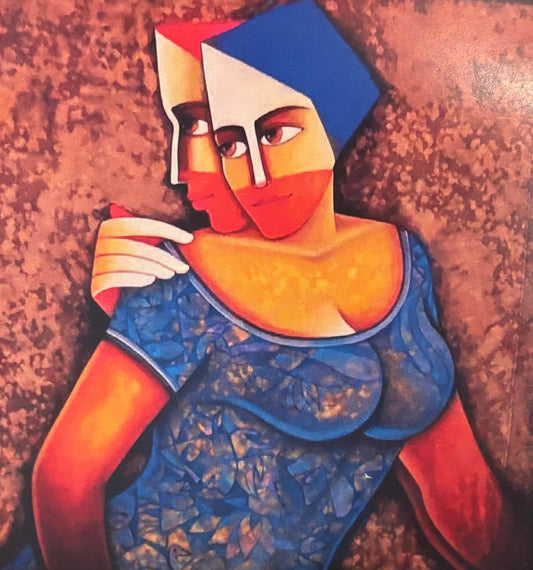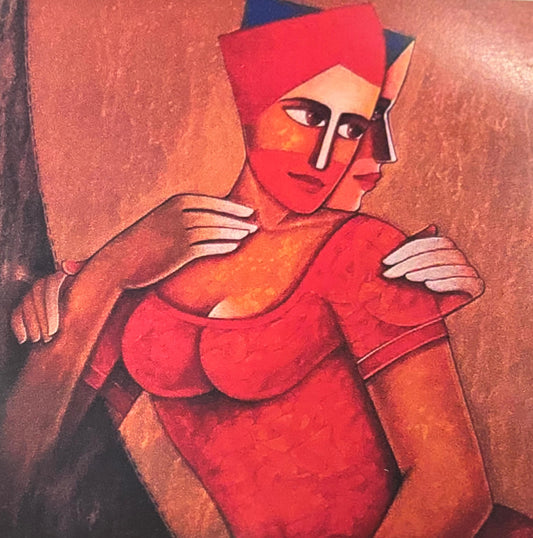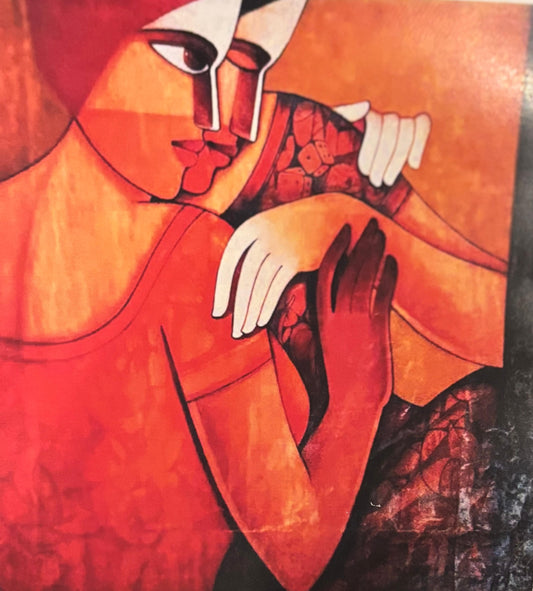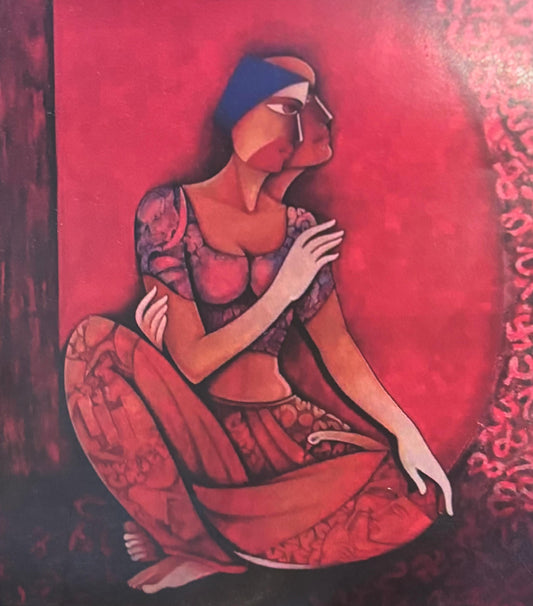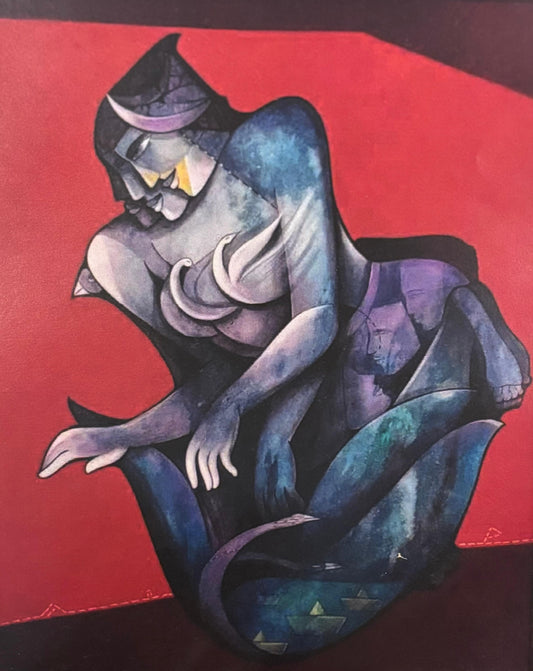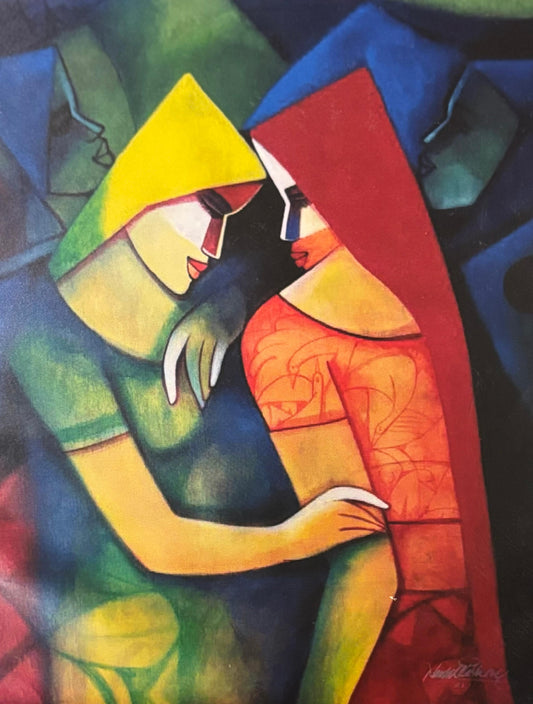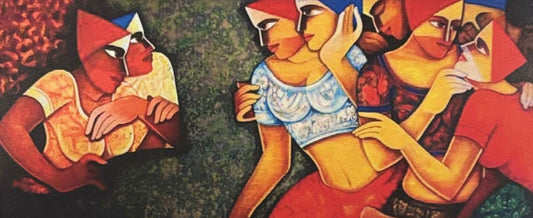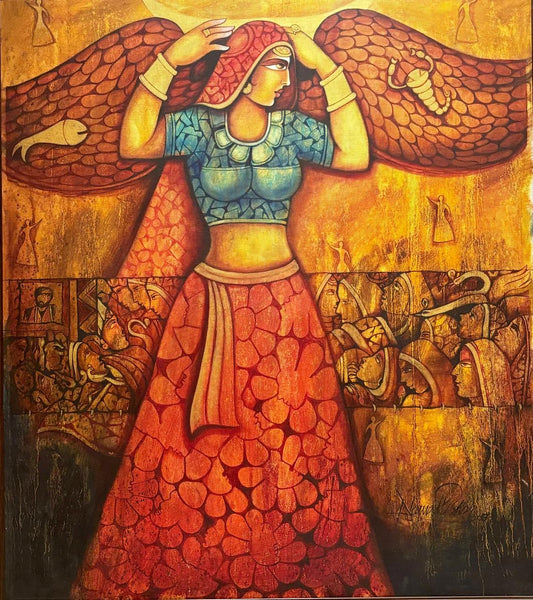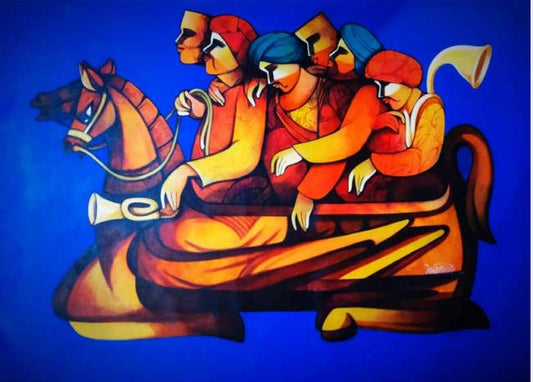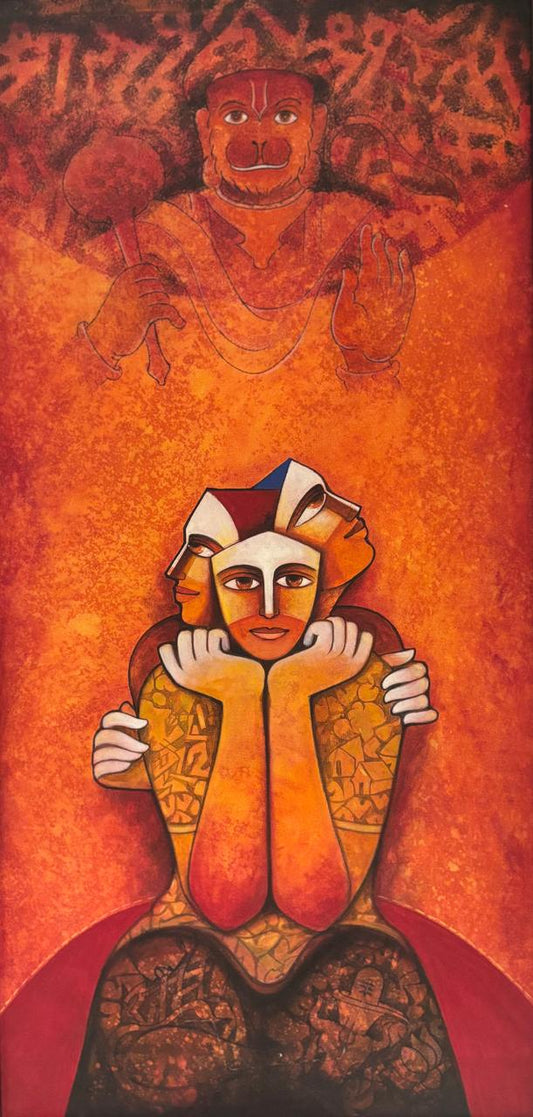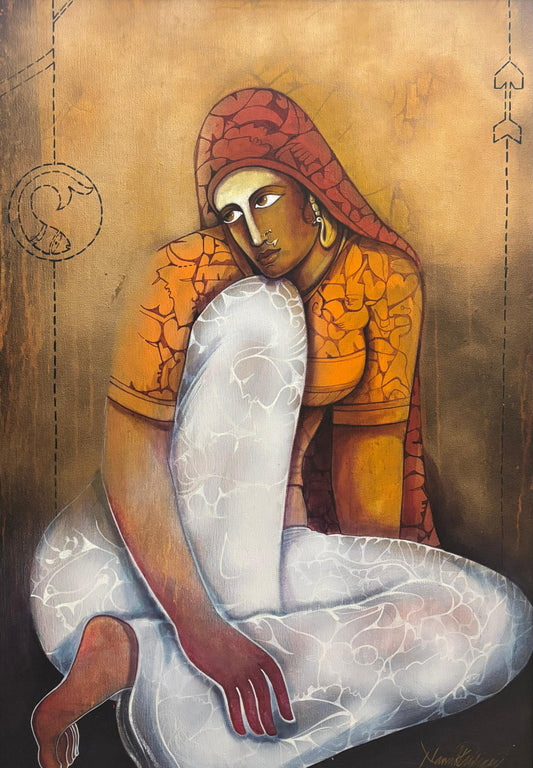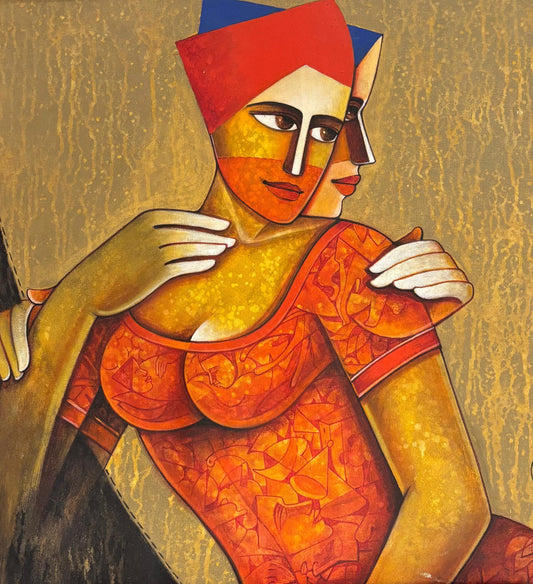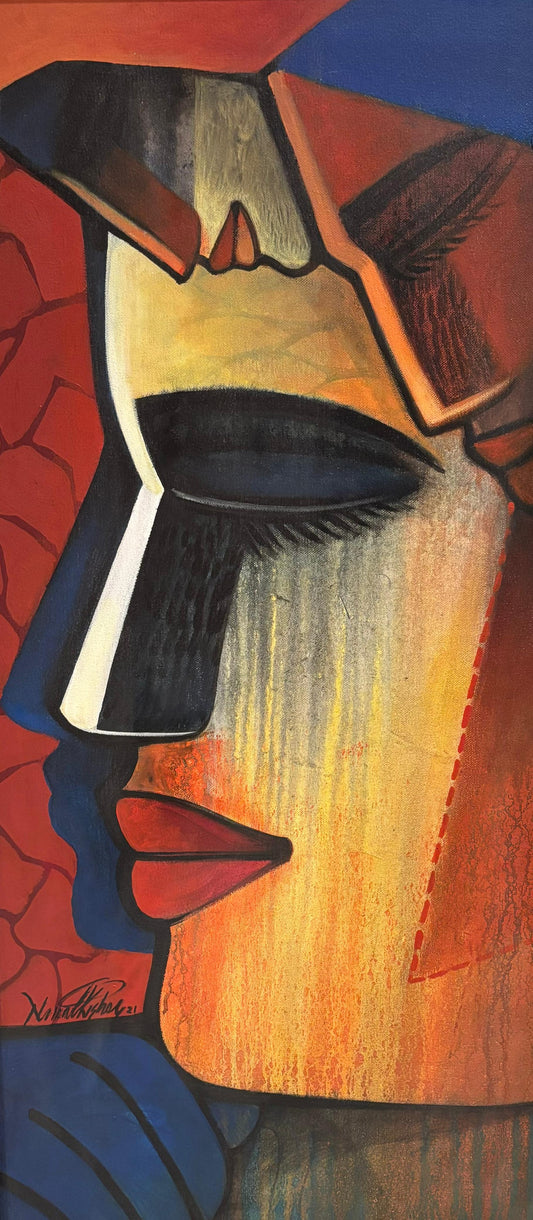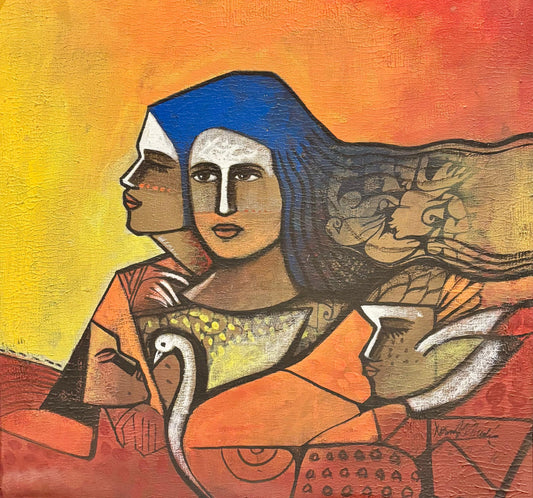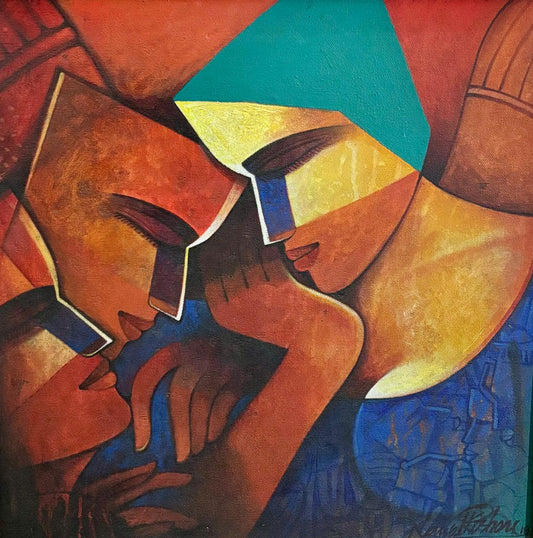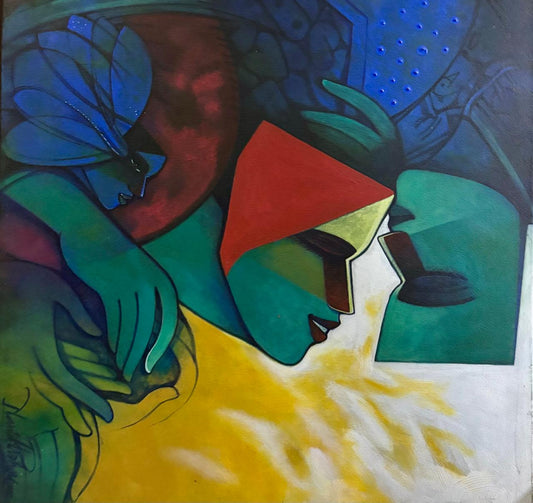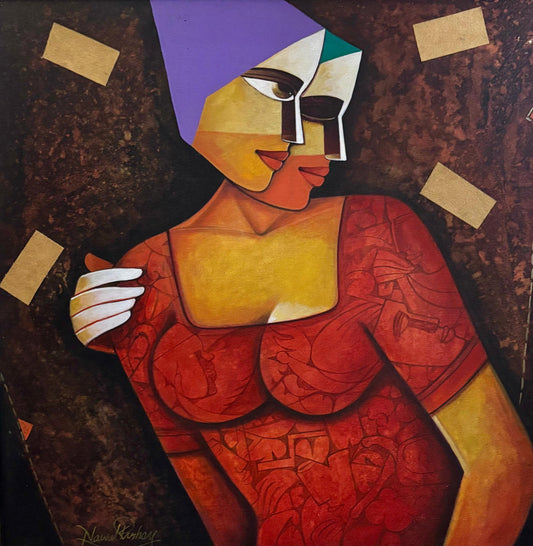
NAWAL KISHORE
Nawal Kishore is known for a refined visual language that weaves together the sensibilities of Indian tradition with a decisively modern aesthetic. His practice is grounded in a careful negotiation between form, color, and emotion, resulting in works that are at once rooted and forward-looking. Trained at the Lucknow College of Arts & Crafts, where he earned both his Bachelor of Fine Arts (2000) and Master of Fine Arts (2004) in Painting, Kishore has developed a formal clarity that reflects the academic rigour of his education while embracing a painterly freedom that resists easy categorization.
His canvases are layered with intuitive gestures, deliberate spatial constructions, and a sensibility attuned to material nuance. The surfaces often evoke a quiet intensity, neither overtly didactic nor decorative, creating space for ambiguity and interpretation. This nuanced balance has brought his work to the attention of institutions and collectors across India. His paintings have been featured in exhibitions at leading venues such as the All India Fine Arts & Crafts Society (AIFACS), Lalit Kala Akademi in both Lucknow and New Delhi, and the Indian Academy of Fine Arts in Amritsar. In 2012, his inclusion in the Art Bangalore Auction signaled a growing recognition within the art market, reflecting a broader appreciation for his contribution to contemporary Indian painting.
Equally committed to pedagogy, Kishore held the position of Head of Department at the Amity School of Fine Arts from 2004 to 2007, across its campuses in Lucknow and Noida. During this period, he played a pivotal role in shaping the academic direction of the institution, fostering an environment where young artists were encouraged to cultivate both technical fluency and conceptual clarity. His approach to teaching mirrored the sensibilities of his own practice, rigorous yet responsive, structured yet open to experimentation.
While remaining firmly embedded within the Indian contemporary art scene, Kishore’s work retains a strong connection to the ethos of Indian visual culture, not through overt symbolism, but through a deep awareness of rhythm, texture, and compositional harmony. His ongoing engagement with both studio practice and art education reflects a holistic understanding of art-making as a lifelong pursuit—one that encompasses reflection, discipline, and an evolving inquiry into the language of painting. He continues to live and work in India, contributing to a dialogue that is as much about inheritance as it is about innovation.
-
Nawal Kishore
The Divine Love 3
Regular price Rs. 75,000.00Regular priceUnit price per -
Nawal Kishore
The Divine Love 2
Regular price Rs. 0.00Regular priceUnit price per -
Nawal Kishore
Soul Sisters
Regular price Rs. 75,000.00Regular priceUnit price per -
-
-
-

